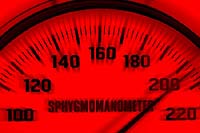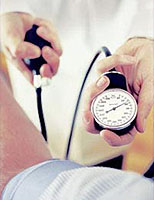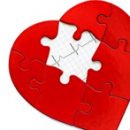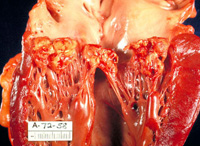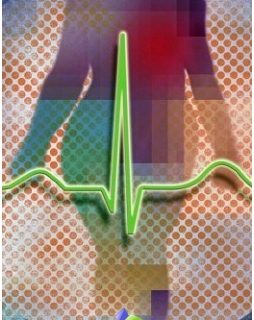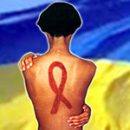When they talk about elevated pressure, many of us first think about the heart. Doctors such a superficial view of hypertension is alarming. Especially when it comes to renal hypertension - one of the most insidious and most complex ailments. "What is the kidney?" - you ask. About this and go our conversation...
Content
-
Question number 1. What have the kidneys?
-
Question # 2. What is the difference from the hypertension of ordinary?
-
Question number 3. Who is in the risk group?
-
Question number 4. What is dangerous renal hypertension?
-
Question number 5. Is there any salvation?
-
Reply to the most common questions related to the renal hypertension, we asked the Doctor of Medical Sciences, Director of the Republican Center for Man's Reproduction Mikhail Koriakina.
In patients inexperienced in medical issues, this question occurs most often. For specialists, the mechanism of development of renal hypertension is obvious: because the pressure is derived from the interdependent work of the heart, kidney and vascular tone. In the process of the evolution of the kidneys, the function of the pressure regulator was assumed. Otherwise, they simply could not filter the water incoming to us.
If for any reason, this mechanism is disrupted and the pressure drops, the renin is discharged into the blood - a specific substance converated into angiotensin, which has a vasoconstrictor effect and stimulates the products of the Aldesterone - the hormone of adrenal glands, which is delaying in the sodium and water. There is a threatening situation at which the level of circulating blood does not correspond to the volume of the vascular bed.
What is the difference between renal hypertension from ordinary?
With normal (cardiac) hypertension, pressure jumps in response to emotional or physical stress. When renal - high pressure keeps constantly.
As a rule, under the renal hypertension increases the lower - diastolic - pressure. For an adult man Ideal indicators Arterial pressure is 120/80 mm RT. Art. And an acceptable is considered to rise to 140/90. All that is higher - abroad.
Especially Positive Recently, doctors relate to the so-called soft hypertension, in which the pressure level is 140-159 / 90-99 mm RT. Art. Does the physicians are considered the most insidious. The person can feel quite normal and not suspic what stands from the fatal line. At one time it was even believed that such a slight rise in pressure and should not be treated. As long as it turned out that it is he who is the main provocateur of brain strokes.
Renal hypertension often chooses to sacrifice young and workable. Most often - men. What, according to experts, has a completely scientific explanation: representatives of the strong half of humanity have always had a great tendency to hypertension. Unlike women, men have more body weight, which means the volume of the vascular bed with blood circulating in it, which creates "favorable" conditions for a higher level of pressure.
What is dangerous renal hypertension?
Renal hypertension do not envy. In addition to heart and renal failure, as well as brain circulation disorders, regular increase in diastolic pressure is fraught with hemorrhages in the retina, heavy lesions of the arteries. The "malicious" hypertensives change the properties of blood (it becomes more viscous), the lipid exchange is disturbed, the vessels, as corrosion, are affected by atherosclerosis, lose their elasticity and require all great efforts. People with high pressure heart - a real "weightlifter".
Until recently, the renal hypertension was treated with the grievors of drugs, which did not always lead to the desired result. Contrary to popular belief (that, they say, hypertension is successfully treated), with hypertension with the kidney component, a truly positive result, doctors succeed only in 4% of cases. The reason is the complexity of the mechanism of regulation of renal pressure. And the mass of adverse reactions to drugs downgrading it.
Recently, hypertensive has hope - a unique and very effective method of treating hypertension, allowing without surgery and anesthesia to change the direction of blood flow and reduce the number of hormones provoking the lifting of blood pressure and vascular spasm. True, this technique is not so new. Noah-how, which makes up the subject of pride of our urologists, was open and patented thirteen years ago.
The essence of the unique method is to be painless puncture of the femoral veins, through which under the control of the X-ray in the central veins of adrenal glands, miniature spirals covered with teflon are introduced. Thanks to such a manipulation in adrenal glands, blood flow changes, the excessively produced Aldesterone and other stress hormones in the liver occurs, where they are destroyed, eliminating hypertensive from suffering for many years.
Any kidney disease can be the cause of renal hypertension: a renal artery disease (due to atherosclerosis or congenital abnormalities of vessels), polycystic disease (hereditary disease, as a result of which renal cloth is squeezed), nephropathy (consequence of diabetes mellitus) and even pyelonephritis, causing serious changes to The structure of the kidney itself.
-
Watch your pressure. Especially unfavorable days for meteorological parameters, to which hypertensive, as is known, especially sensitive. Before Measure pressure, 10-15 minutes sit calm. Make a few measurements (preferably on both hands) in a calm state, at the time of voltage and after it. Do not strive to maintain the usual pressure for you so much "working", if it goes beyond the boundaries of the norm. According to Mikhail Koryakina, every millimeter of lifting diastolic (lower) pressure is above 100 - crossed out of your life year.
-
Be a bow! An impending attack of renal hypertension, as a rule, is preceded by dizziness, headache, flickering "flies" before your eyes, weakness in the limbs, nasal bleeding, gulp pain in the heart area.
-
If you regularly celebrate such symptoms, do not pull. Run to the doctor! First of all, find out if your hypertension does not have a kidney component: pass the blood to hormones, perform magnetic resonance tomography of the adrenal glands, and if you need - and the angiography of the renal arteries.
-
Try to normalize body weight. The loss of each extra 5 kg reduces the pressure immediately for several divisions. Reasonable exercise and low-calorie diet - optimal option.
-
Dump itching food. For hypertensive salt - enemy number one. It leads to a fluid delay in the body and increases the already high vascular tone.
-
If you are a smoker, then take the courage and try to gradually refuse smoking, as well as die alcohol consumption. Most more that it is allowed to take hypertensive on breasts - 60 ml of strong alcohol and 200 g of dry wine per week. The same refers to coffee and strong tea. Limit their consumption at least to a cup of day.

